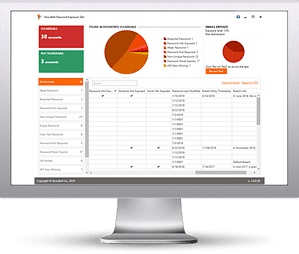Technology presents us with opportunities that even just a few years ago would have seemed impossible, but with those opportunities come a whole new set of risks. So, how do you strike a balance? We’ve put together a list of habits to help you embrace the digital revolution and minimise risks.

1) Make Sure You Know Your Business Inside Out
In order to properly manage risks, you need to first have a clear picture of what you’re working with. Once you have a detailed list of all your critical assets, technologies (including all devices), objectives and processes, you’ll be able to get a better idea of vulnerabilities – and how to tackle them.
2) Prioritise Tasks According to Risk
It might feel a bit overwhelming trying to work out where to start, which is why a thorough inventory is worth its weight in gold. Once you’ve identified all the devices and processes you use, do a risk assessment for each one and prioritise your task list according to your findings.

3) Understand What Your Stakeholders and Board Members Want
Most boards and customers are asking more questions about data security now, so you’ll need to be prepared to answer their questions and provide accurate reports. Take the time to build relationships with your stakeholders and listen to their concerns and draw up a risk report based on their needs. Ask your board how often they want to be updated and what level of detail they want – in most cases, they won’t need to understand the minutiae of how you’re handing every risk, as long as you can prove you’ve thought about all eventualities and are being proactive.
4) Follow Industry Best Practice and National Standards
Drawing up a risk management strategy can be time consuming, and your time is precious, so don’t stress yourself by trying to reinvent the wheel. Take a look at best practice in your industry and do some research into how other businesses in your sector are managing risk, then adapt it accordingly to suit your own organisational requirements.
5) Create a Resilient System
Any IT expert will tell you that prevention is much better than cure, so it’s all about being proactive and resilient. Ransomware continues to be a big threat for industries across the board, but it’s actually pretty easy to manage with the right software and processes in place. That said, there’s no silver bullet that offers guaranteed protection against all cyber threats, so you’ll also need a robust incident response plan in place to ensure that if your data does become compromised you can get back up and running quickly and cost effectively.
6) Promote a Culture of Awareness
You can invest a fortune in anti-virus software, but the most important part of your cyber security toolkit is arguably your people. Hackers can only infiltrate your system if someone lets them in, so invest in good training and keep your staff up to date on common risks and how to spot them.
7) Make Informed Decisions
There are lots of different types of software out there that all claim to offer all singing, all dancing protection against cyber-attacks. But just because a brand claims to be good, there’s no guarantee they will be, so take your time to ask questions, read (genuine) reviews and work out what you really need. Never assume systems, people and processes can be trusted until you’ve done your homework.
8) Know Your Enemy
Sun Tsu wrote about it centuries ago in The Art of War, and it’s still relevant now – when you understand who your adversaries are know how they behave, you’ve got a much greater chance of winning the battle. It’s essential to make security awareness an intrinsic part of everything you do and keep on top of the latest cyber crime trends and tactics – or, if you really can’t stand getting bogged down in such things, you invest in a good ally who will fight on your behalf.
To find out more about how to manage risk in your organisation, contact our friendly team of specialists here at Actisoft Technology today!
Are your users putting a big target on your organisation’s back?
Cybercriminals are constantly coming out with new ways to hack into your network and steal your organisation’s confidential information.
Find out if your users are putting a big target on your organisation’s back.
KnowBe4’s new Password Exposure Test (PET) is a complimentary IT security tool that allows you to run an in-depth analysis of your organisation’s hidden exposure risk associated with your users.
PET makes it easy for you to identify users with exposed emails publicly available on the web, and checks your Active Directory to see if they are using weak or compromised passwords that are part of a known data breach. PET then reports on any user accounts affected so you can take action immediately!

Here's how it works:
- Checks to see if any of your organisations email addresses have been part of a data breach
- Tests against 10 types of weak password related threats associated with user accounts
- Checks against breached or weak passwords currently in use in your Active Directory
- Reports on the accounts affected and does not show/report on actual passwords
- Just download the install, run it, get results in minutes!
Identify how many users take the bait and reply before the bad guys do!
